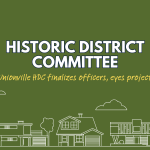Farmington Wetlands Commission Tackles Vine Hill Road Violations and Basin Restoration
By Jack Beckett, The Farmington Mercury
Farmington, CT – On Tuesday evening, the Farmington Inland Wetlands Commission met to discuss pressing environmental concerns, including two cease-and-desist orders that have drawn the attention of local residents. Centered on wetlands violations at 17 Vine Hill Road and the stormwater basin at 1509 Farmington Avenue, the meeting highlighted the commission’s commitment to preserving Farmington’s environmental integrity.
For those interested, the full proceedings of the meeting can be watched on YouTube here.
Roll Call and Quorum
The meeting was called to order at 7:01 p.m., with Bruce Gordon, the Town Planner, conducting the roll call. Commissioners Richard Brilandy, David Fox, Mark Simpson, Andre Simons, and Jay Tulin were present, ensuring a quorum. Absent from the session were Robert Eisner and Neil Kelsey, who had informed the commission in advance of their absences. Jay Tulin was appointed to vote in place of Eisner for the evening.
Vine Hill Road: Restoration Plan Update
The first item on the agenda was an update on the cease-and-desist order for 17 Vine Hill Road, where property owner George Santos presented his revised restoration plan following feedback from previous site visits.
“We’ve extended the buffer in Zone B from 16 to 25 feet, as requested,” Santos reported. “We’ve also increased the number of shrubs from 20 to 78 and introduced a conservation seed mix to stabilize the soil and promote ecological recovery.”
While Santos’s revisions addressed many of the commission’s previous concerns, David Fox raised a question about the continued maintenance of the eastern lawn on the property, suggesting that it could be allowed to return to a natural state.
“That lawn doesn’t serve much purpose given its location near the wetlands,” Fox said. “Converting it into an extended buffer zone could eliminate unnecessary mowing and irrigation, while benefiting the environment.”
Santos expressed openness to the idea but stopped short of committing without first discussing it with the landowner.
Andre Simons supported Fox’s suggestion, noting that expanding the natural buffer would likely improve the ecological health of the area. “Replacing that lawn with additional native plants would further restore the integrity of the wetlands,” Simons added.
Commission’s Vote on Vine Hill Road
Following deliberation, the commission moved to approve Santos’ updated restoration plan with a provision to reassess the status of the lawn at a future date. Jay Tulin made the motion to approve, with Mark Simpson seconding. The motion passed unanimously, with the commission planning to continue monitoring the site to ensure compliance.
1509 Farmington Avenue: Basin Restoration and Invasive Species Control
The second major agenda item focused on the ongoing cease-and-desist order at 1509 Farmington Avenue, where the stormwater basin has been overtaken by the invasive plant species Phragmites. Wetland scientist Eric Davison presented a comprehensive restoration plan to eradicate the invasive plants and repopulate the basin with native species.
“Our goal is to replant the basin using a two-zone system,” Davison explained. “The lower zone will be populated with wetland species that thrive in saturated soils, while the upper slopes will support plants more tolerant of dry conditions.”
Davison advised waiting until spring for the bulk of the planting, ensuring better conditions and availability of species. “Our focus this fall will be on Phragmites control, so we can give the native plants a head start in the spring,” he said.
Erosion Control and Timing Concerns
Erosion management during the winter months was a significant concern raised by several commissioners, particularly Chairman Ned Price, who stressed the importance of stabilizing the area if grading is completed before winter.
“If grading is done before spring planting, we’ll need to ensure strong erosion controls are in place to prevent damage,” Price said.
Davison assured the commission that temporary erosion control measures, such as silt fences and hay bales, would be installed to protect the site. Town Planner Bruce Gordon suggested that town staff coordinate closely with Davison to ensure timing and control measures align with the project’s needs.
“We’ll make sure that the grading, planting, and erosion control work together seamlessly,” Gordon said.
Approval with Conditions
With concerns addressed, the commission voted to approve the restoration plan with the following stipulations:
- Temporary erosion controls must be installed if grading is completed before the winter season.
- The restoration plan must include a three-year monitoring period to ensure long-term success.
- The planting schedule and site updates will be coordinated with town staff to ensure compliance and efficiency.
The motion to approve was made by Rich Brilandy, seconded by Mark Simpson, and passed unanimously.
Special Thanks to Our Sponsor
And before you go, let’s take a moment to thank our sponsor: Farmington Storage, located at 155 Scott Swamp Road. Whether you’re looking to store seasonal decorations, old furniture, or perhaps 78 shrubs for your own restoration project, Farmington Storage has you covered. Check them out or give them a call at 860.777.4001. Trust us—they’ll keep your belongings safe, and they might even appreciate a shoutout about invasive species storage solutions!











